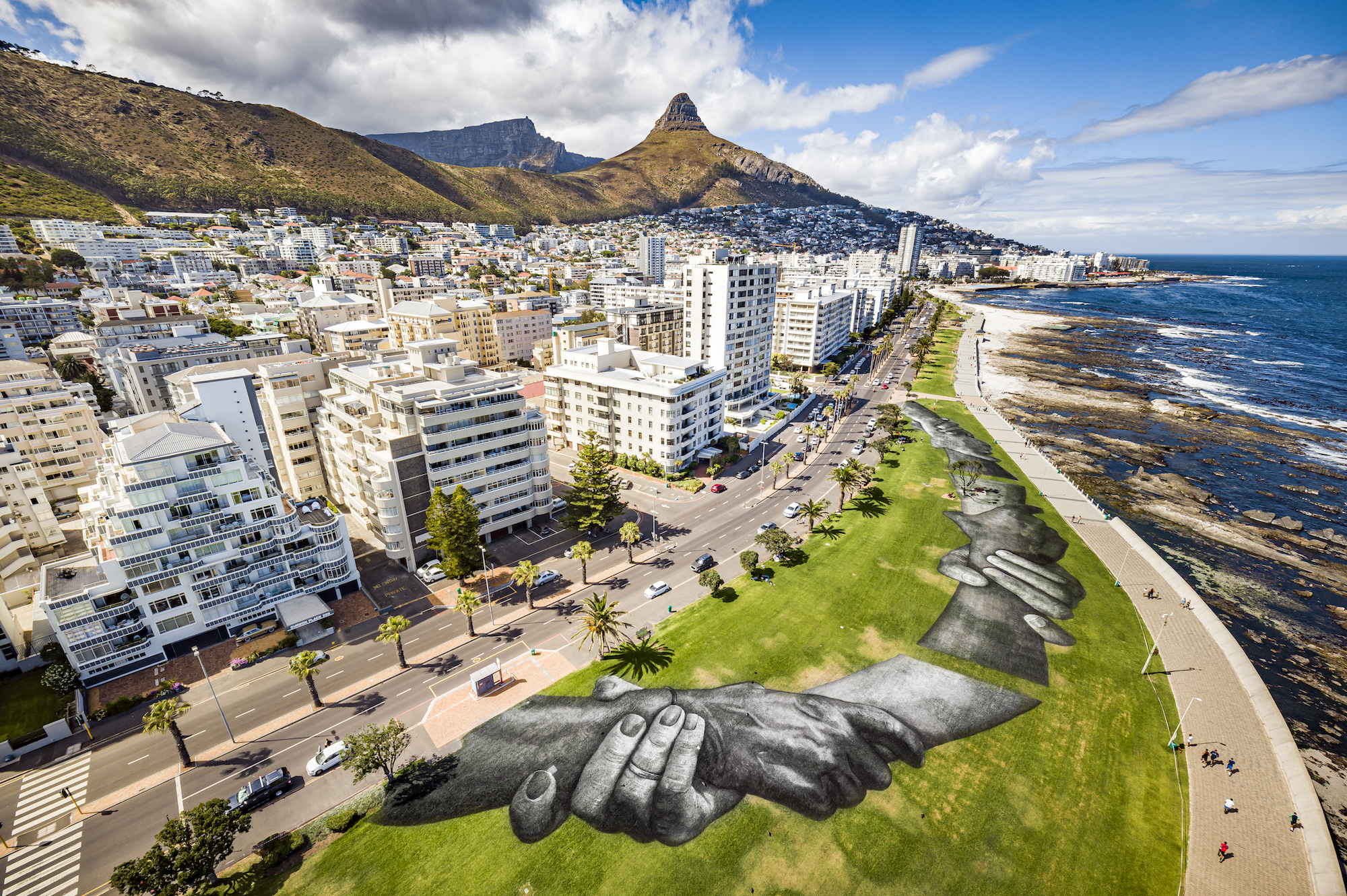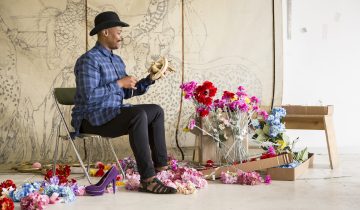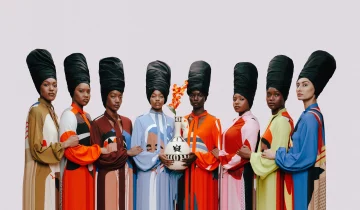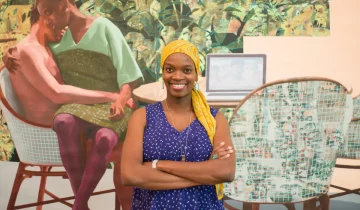Urban Murals in Africa: Street Art as a Tool for Social Change
Once the reserve of the disaffected and the clandestine, street art, in all its forms, has come to wield an influence far beyond the realm of graffiti, becoming a conduit for social change. Urban murals, those vast, intricately designed works that adorn the walls of our cities, have become particularly potent, acting as a canvas for artists to comment on the world around them. In Africa, the street art scene is flourishing, with artists using urban murals as a means of addressing pressing societal issues and promoting cultural identity. In this journal, we shall delve into the transformative power of African urban murals, exploring their role in shaping social change, and the challenges faced by these artists.
A. Role of urban murals in promoting social awareness
In a continent as vast and diverse as Africa, street art has emerged as an expressive medium capable of transcending linguistic and cultural barriers. Artists, using their work as a form of visual activism, have been successful in amplifying awareness of pressing issues, including political, environmental, and social injustices.
1. Addressing political issues
Urban murals have been employed as vehicles for political protest, with artists using their craft to comment on and criticize the actions of those in power. A striking example is the work of Tunisian artist eL Seed, who adorned the city of Kairouan with an enormous Arabic calligraphy piece that read, “The one who rules by fear, rules only over a people of ashes.” This provocative piece, created during the Arab Spring, exemplifies the power of street art in voicing dissent and challenging authority.
2. Raising environmental consciousness
African street artists are increasingly using their work to highlight the urgency of environmental concerns. In Nairobi, Kenya, the artist group Maasai Mbili uses murals to raise awareness of the devastating effects of climate change, deforestation, and pollution on local ecosystems. Their large-scale works often depict the intricate connections between humans and the natural world, emphasizing the importance of conservation and sustainable living.
3. Highlighting social injustices
Urban murals have become a tool for artists to shed light on social injustices, rallying communities around shared causes. South African artist Faith47’s works often explore themes of inequality, gender violence, and human rights. In Johannesburg, her mural “The Harvest,” depicting a woman carrying a bundle of branches, serves as a powerful reminder of the daily struggles faced by many women in the region.
B. Urban murals as a means of cultural expression and identity
The dynamic street art scene in Africa is not only a platform for socio-political discourse but also a means for celebrating the rich cultural history and heritage of the continent.
1. Celebrating local history and heritage
Urban murals often pay homage to the history and heritage of a place, showcasing the unique stories and cultural symbols that define communities. In Dakar, Senegal, the artist collective Doxandem Squad creates murals that celebrate the city’s rich history, drawing on local legends, cultural icons, and traditional Senegalese motifs.
2. Showcasing African talent and creativity
The African urban mural scene has become a global showcase for the continent’s creative talent. Artists such as Nigerian painter Osa Seven and South African muralist Ricky Lee Gordon have gained international recognition for their visually stunning and thought-provoking works, proving that African street art is a force to be reckoned with.
3. Providing a platform for marginalized voices
Street art provides a platform for marginalized voices, allowing artists from underrepresented backgrounds to express their unique perspectives. In Uganda, the KLA ART Festival has been instrumental in supporting the work of female artists, such as Papillon Sheebah, whose murals challenge traditional gender norms and champion women’s empowerment. Through these works, street art amplifies the voices of those who may have otherwise been silenced or overlooked.
C. Economic and community impact of urban murals
Beyond their aesthetic and cultural significance, urban murals have tangible economic and social benefits for local communities.
1. Generating tourism and local revenue
Cities across Africa have witnessed a surge in cultural tourism, with visitors flocking to admire the vibrant street art scenes. This influx of tourists generates revenue for local businesses and creates employment opportunities for artists and art-related ventures. In Cape Town, South Africa, the Woodstock neighborhood has become a hub for street art tourism, with guided tours and workshops contributing to the area’s economic revitalization.
2. Fostering community pride and cohesion
Urban murals have the power to instill a sense of pride and unity within communities. In the Democratic Republic of Congo, the artist collective Goma Street Art uses murals to beautify public spaces and foster a sense of belonging among residents. Their work not only enlivens the urban landscape but also encourages residents to take ownership of their surroundings and contribute to the betterment of their communities.
3. Encouraging urban revitalization
Street art can serve as a catalyst for urban revitalization, transforming neglected spaces into vibrant cultural hubs. In Accra, Ghana, the Chale Wote Street Art Festival has been instrumental in revitalizing the historic district of Jamestown, attracting artists, musicians, and creatives to the area, and fostering a vibrant, collaborative atmosphere.
D. Challenges and limitations of street art as a tool for social change
While urban murals hold great potential as a tool for social change, they also face numerous challenges and limitations.
1. Legal and ethical concerns
The often-subversive nature of street art has led to conflicts with authorities, with many artists facing legal repercussions for their work. Questions of property rights, vandalism, and censorship have hindered the street art movement, limiting the potential for expression and dialogue.
2. Permanence and preservation of artworks
The ephemeral nature of street art poses challenges for the preservation of these works. Urban murals, exposed to the elements and the ever-changing urban landscape, are often short-lived, leading to debates over the value of preserving these works for future generations.
3. Potential for misinterpretation or co-opting of messages
The commercialization of street art has raised concerns about the potential for messages to be co-opted or diluted. As urban murals gain mainstream recognition, artists must grapple with the possibility that their work may be misinterpreted or appropriated, undermining the original intent and impact.
E. Case studies: Examples of transformative urban murals in Africa
To further illustrate the power of urban murals in Africa, let us consider three compelling case studies.
1. The Chale Wote Street Art Festival in Ghana
This annual festival, held in Accra’s historic Jamestown district, brings together local and international artists to create large-scale murals, installations, and performances. The event has been transformative for the area, attracting tourists, generating economic opportunities, and fostering a sense of community pride.
2. The Nuart Festival in South Africa
The Nuart Festival, held in Stavanger, Norway, has expanded its reach to include a sister event in Cape Town, South Africa. This partnership has facilitated cultural exchange and collaboration between international and South African artists, creating stunning urban murals that address local and global issues.
3. The Wide Open Walls project in Gambia
This initiative, founded by British artist Lawrence Williams, aims to transform rural Gambia through the power of street art. International artists are invited to collaborate with local creatives, creating murals that celebrate the area’s unique culture and natural beauty while also addressing social and environmental issues. The project has not only brought global attention to the region but has also generated income for the local community and fostered a sense of pride and unity among residents.
In conclusion, Urban murals in Africa have emerged as a powerful tool for social change, allowing artists to engage with pressing societal issues, promote cultural identity, and foster economic and community development. From political protest to environmental advocacy, African street artists have harnessed the potential of their medium to effect tangible change, despite the challenges and limitations they face.
As we look to the future, it is essential to continue supporting the vibrant street art scene across Africa, encouraging further research, collaboration, and investment in this transformative art form. By doing so, we can ensure that urban murals remain a potent force for social change, inspiring future generations and contributing to a brighter, more equitable future for all.





 No products in the basket.
No products in the basket.